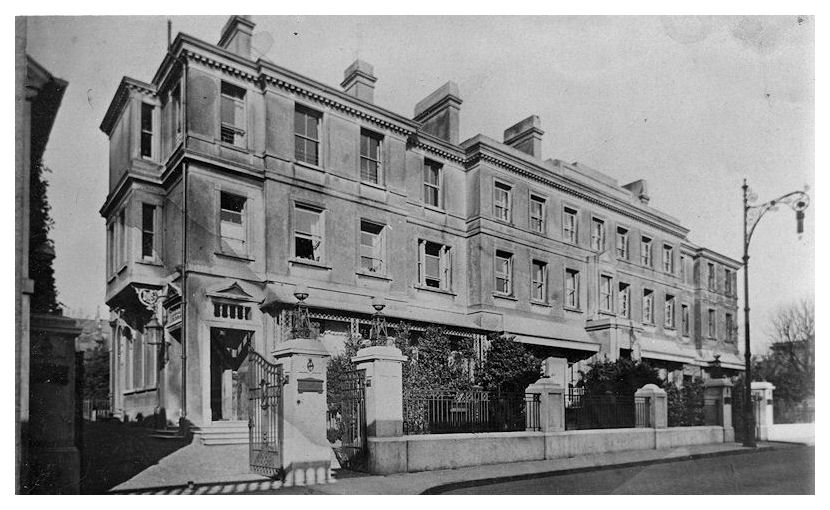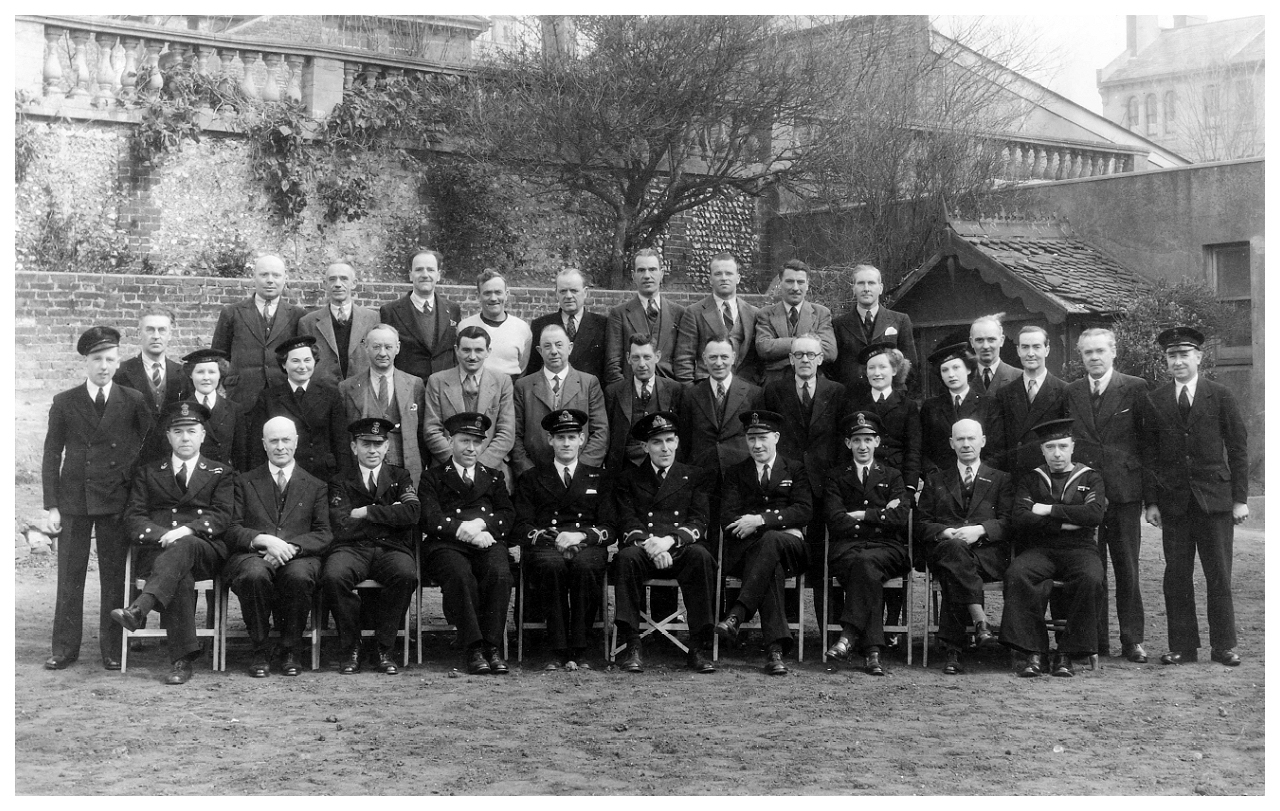


The Royal Navy established a Wireless Telegraphy Training School in Brighton, Sussex in April 1942 to train communications ratings and WRNS personnel of the Telegraphist (Special) branch. The school headquarters was established at 29 Queen's Road, Brighton with other sites in Brighton being requisitioned for the use of the school; the main instructional site was located in the former St. Dunstan's property at West House, 12-14 Portland Place, Kemp Town.
The St. Dunstan’s organisation, which cared for war-blinded ex-servicemen in several properties in Brighton, had begun evacuating its premises in Brighton in the autumn of 1940 when the south coast of England became a dangerous place to be after the fall of France in June. The bulk of its operations moved to Church Stretton in Shropshire but the residential care home that was West House was relocated to Melplash Court in Dorset. The evacuated buildings were maintained by a skeleton staff until they were requisitioned by the War Office; all of its facilities all were destined to be occupied by the Admiralty for the remainder of the war.

The HQ and West House buildings were known by the names Brighton I and Brighton II but the unit was never commissioned with an official ship's name. The school was most likely a dispersed sub unit of the main RN Signals School, HMS Mercury, at Leydene House, East Meon, near Petersfield, Hampshire. The schools accounts were carried locally by HMS VERNON (R) the Admiralty Torpedo, Mining & Electrical Training Establishment at Roedean School for Girls, a mile further along the coast.
Ratings attending the school undertook the first stage of their eight-month course at West House and were billeted locally in the Kemp Town area of Brighton. Training was undertaken by naval officers and civilian instructors who were former G.P.O. employees with specialist skills.
Telegraphist Clifford Dennison who attended course 72 during 1943 recalls that he was billeted, along with seven others, with Mrs Morris at 18 Broad Street during his first stint at the school. Similarly, Telegraphist Andrew Linn recalls that he stayed with Mrs Zirdzins at 7 Dorset Gardens. In addition to dispersed billeting a room above a garage at no. 26 Edward Street was used as a ratings dining hall.
Beginning in November 1943 a second wireless telegraphy school was established at St. Bede's Preparatory School, Dukes Drive, Meads, Eastbourne to carry out part two of the Telegraphist (S) course; while attending this school ratings were accommodated at the Eastbourne School of Domestic Economy, 1 Silverdale Road Eastbourne.
Ratings transferred to Eastbourne on completing the three-month initial phase of training in Brighton to undertake five months of specialist training. This involved learning to understand enemy Morse code. In the case of Telegraphist Dennison this was training in the interception of Japanese Morse code, others learned to understand German. A three weeks course in the operation of HF/DF equipment was also conducted at Eastbourne for Telegraphist ratings training to detect German submarines; these Telegraphist (s) ratings were for service on convoy escort vessels.
From Eastbourne ratings returned to Brighton to finish off and be passed out as Special Operators and rated Telegraphist (S). Clifford Dennison and others were billeted at 21 Lower Rock Gardens on their return; Andrew Linn was lodged with Mrs Early at Marine Parade. Passing out classes had a group photograph taken, this was done in the garden behind West House. From Brighton ratings were drafted to RN Barracks to await drafts to operational units, Clifford Dennison was sent to Ceylon to intercept Japanese military messages.
The school was closed in June 1945, and appears to have moved to a location in Wimbledon; Telegraphist (S) George Smith was sent there after the RN W/T station in Murmansk, Russia where he worked intercepting German transmissions, had been closed in early 1945, the need for his German Morse skills had now passed and he was to be retrained on Japanese Morse. While at Brighton and Eastbourne at least 95 classes completed the course.
Work began to clean up and prepare West House and get it ready for the return of its owners St. Dunstan's as soon as the school had finished relocating. St. Dunstan's was able to move their permanent residents back from Melplash and reoccupy the building in July 1945.
Thanks to Clifford Dennison, Andrew Linn, and Danny Siggers for their help in researching this article.
Other sources of information include:
The Second World War Experience Centre - Tel (S) George Smith
IWM interview - Tel (S) Victor Buffery, Oral history Reel 2
Related pages: Clifford Dennison's memories of life as a Tel (S)
© 1999-2025 The Royal Navy Research Archive All Rights Reserved Terms of use Powered byW3.CSS
Comments (5)
I think my father, Vincent Chambers is in the 'unknown class' photo. Back row 4th from right. He was in Brighton training school June 1942 and later went to Southmead in Wimbledon to train in Japanese Morse. He was posted to Kilindini Mombassa and then to HMS Anderson when SigInt moved back there. From Aug 43 to Mar 45 He came back to UK and worked in other secret locations till June 1946. I was able to add him to the Bletchley Park Roll of Honour.
As a follow up to my previous comment, since our London office is in Crawley, last summer during a visit I took time to visit Brighton and look for the Training School. It took me a long time to find it and it is now a hospital. Nobody in the hospital was aware it was a Naval Training school but they knew it had been a boy's school. Any chance to put up a plaque in memory of the Training School?
His name is George Brooks, from Doncaster.
My father was in class 89. Fourth from the right in the middle row. We have the same photo at home.
He served on HMS Boxer until the end of the war before going on to study German at Durham University.
Interesting to read of the training school here. Thank you.
Thank you so much for this! My grandfather Fred Henderson always talked about being seconded here as an instructor since he was the best Morse Code operator in the Post Office. Imagine my surprise when I found him in the third picture, in the middle of the second row.